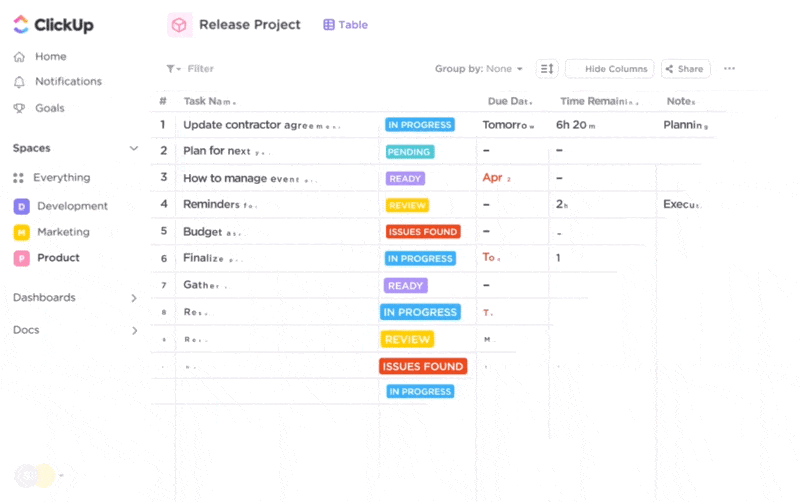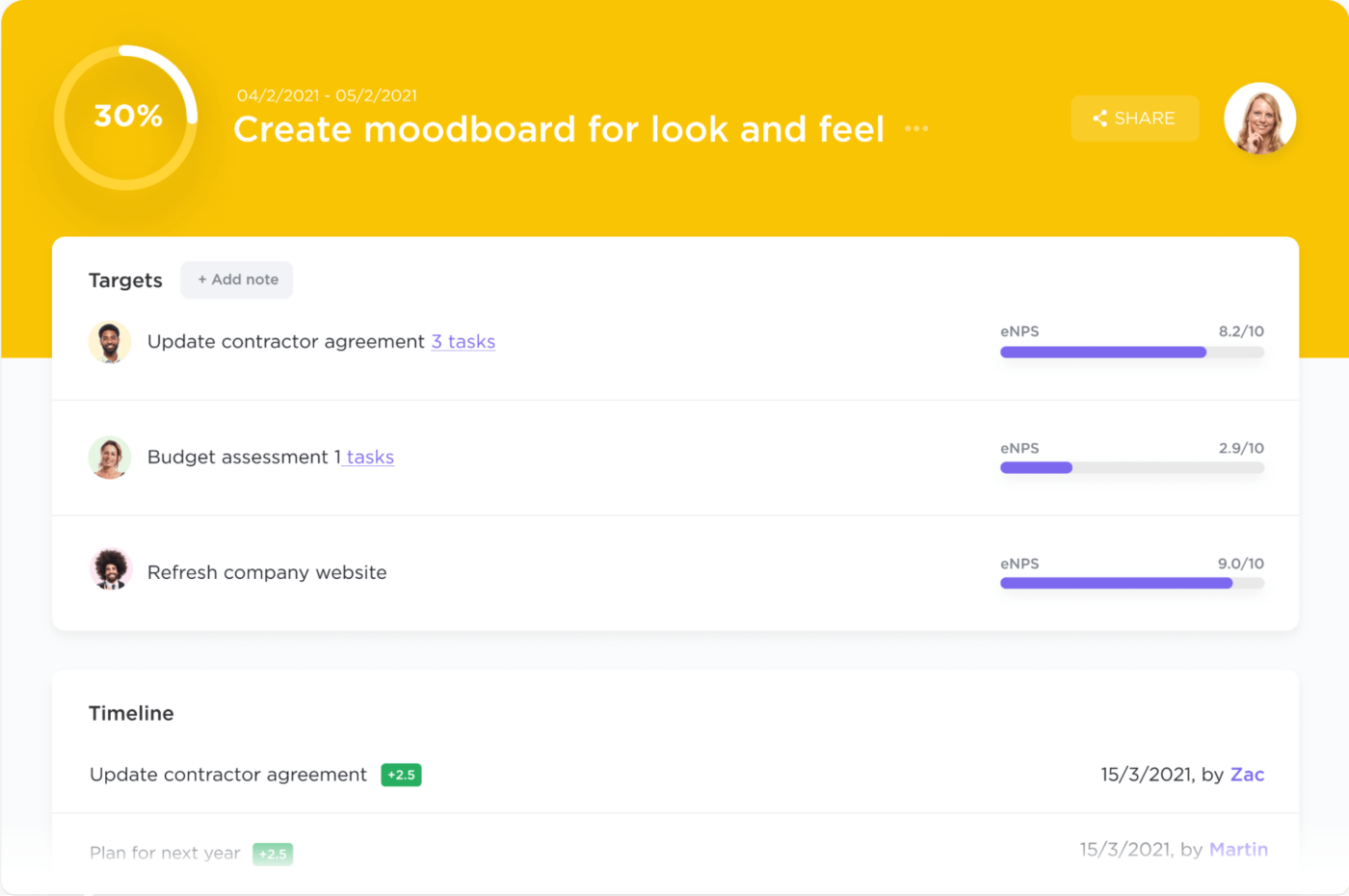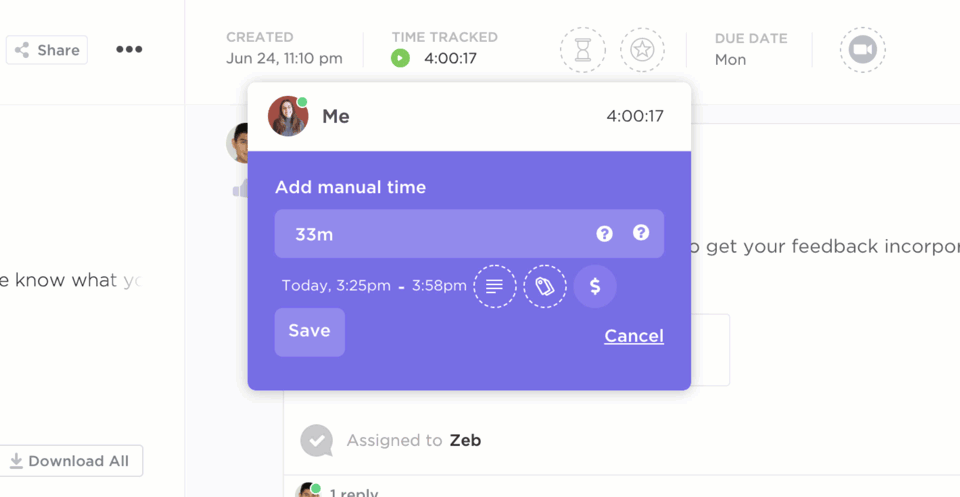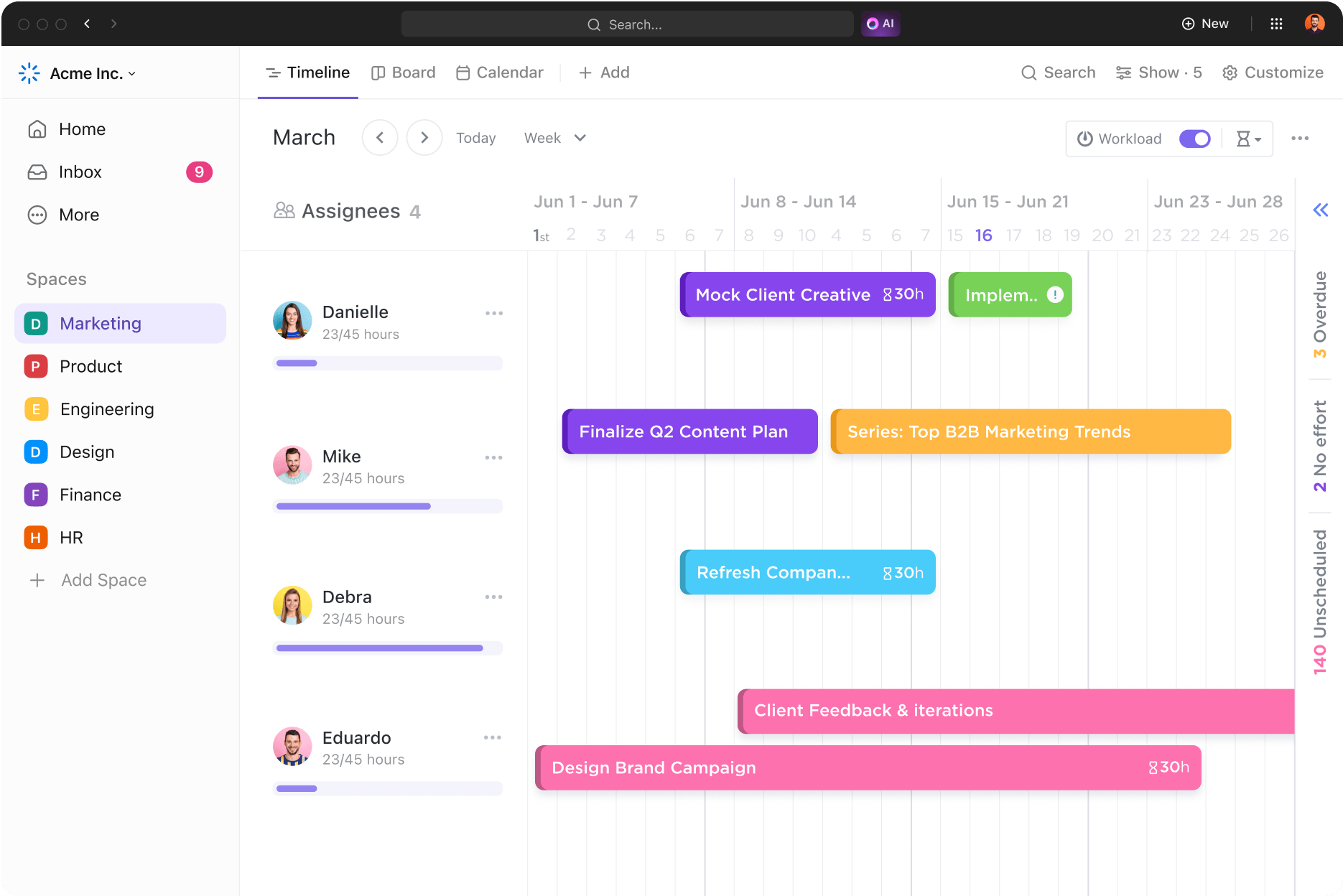As a manager and leader, you’re no stranger to improving your employees’ skills. But what about your skills?
If it’s high time to go beyond the basic functions of your job description, look no further than the four functions of management. This helpful framework provides managers with key areas to improve work quality, reach long-term goals, and build a thriving work environment. 🤝
If you’ve never heard of the four functions of management before, we’ve got you covered. In this guide, we’ll explain how each function works, share helpful examples, and teach you how to apply the four functions no matter your industry.
What Are the Four Functions of Management?
Henri Fayol, a nineteenth-century engineer and executive, first defined the four functions of management: planning, organizing, leading, and controlling. While the concept isn’t new, a manager’s job is to touch on all four functions in their daily work.
Planning
The most important phase of project management is planning. For the planning function, a successful manager will do different types of planning, including:
- Setting goals (both short-term and long-term)
- Building roadmaps to achieve organizational objectives
- Creating strategic plans
Strategic planning requires a lot of context and institutional knowledge. As a manager, you’re in charge of assessing the current situation, setting goals, and making a detailed plan to get from point A to point B.
Planning requires forecasting and predicting future trends, so a strong background in either data or your industry is necessary. An eye for data will serve you well in tactical planning, but you also need creativity.
Outside-of-the-box thinking comes in handy when planning project roadmaps and milestones, so don’t be afraid to embrace new ways of doing things. 💡
Organizing
Once you have a plan in place, it’s time to get all your ducks in a row. The organizing stage of management requires:
- Building a team
- Operational planning
- Distributing resources
- Defining task relationships
- Assigning tasks
Instead of managing everything in email or sticky notes, most managers plug their project plans into project management software like ClickUp. This software automatically clarifies who’s in charge of what, streamlines workflows, and gathers data on resource utilization. 📌

While the PM software will do a lot of the heavy lifting for you, it’s still your job as a manager to build an efficient workflow and see the big picture. You decide on the cadence of deliverables, due dates, tasks, and more to keep the team on the same page.
You’re also in charge of clarifying roles and responsibilities, which is crucial for avoiding rework, miscommunications, and delays.
Leading
The leading function sometimes called the directing function, is when you guide and motivate staff to work towards the project’s goals. This involves a lot of to-dos, including:
- Communication
- Team building
- Adjusting your leadership style to fit the team or situation
- Motivating your team
- Resolving conflict
Any management role requires strong soft skills. Managers need enough experience and social capital to inspire and influence people across different departments.
An effective leadership style requires investing in warm relationships with your team, accepting employees’ innovative ideas, and rewarding everyone for a job well done. 🏆
Controlling
The final function, controlling, might sound like micromanaging, but it’s actually about making sure everything goes according to plan. This function involves:
- Setting performance standards
- Managing team performance
- Taking corrective action when necessary
After all, setting goals and then abandoning them doesn’t make sense. The controlling function ensures quality and adapts your project plans if things change.
Sure, employee performance management is part of the controlling function of management. But solid leaders know this is more about redirection and offering support—not micromanaging. 🙌
How to Apply the Four Functions of Management at Work
How can you apply these functions in the workplace? Here’s how effective leaders implement management functions every day.
Planning tips
Planning is a helpful skill for any job, but it’s especially critical for managers. Follow these quick tips for a more effective planning phase:
- Set realistic goals: Always follow the SMART goal-setting framework. This defines clear, actionable goals that align with your bigger organizational goals—without overwhelming your team
- Conduct a SWOT analysis: A SWOT analysis analyzes internal strengths and weaknesses and external opportunities and threats. This exercise is great for identifying market trends, competition, and resource allocation issues that could have a big impact on your project or team
- Build fail-safes into your plan: There’s no such thing as a perfect plan. Your client might request changes, you might lose funding, or your end-user requirements may change. It happens. Instead of panicking when change happens, create a course of action that adapts as you go. Try looking a few steps ahead at all times to see if the plan needs to change 👀

Organizing tips
Organizing your to-do list, resources, and team members is critical to project success. But even the most organized projects can go off the rails if you aren’t careful. Follow these organizing tips to keep your projects on track:
- Create a hierarchy: Hierarchies are the smartest way to delegate and manage effectively. Create a clear structure that delineates individual roles and teams. Be sure to document this in writing and share it with everyone in the organization. A written hierarchy makes it easier for everyone to see who they should communicate with if they have an issue, allowing you to take a more hands-off approach
- Balance workloads: Keep an eye on work distribution. You don’t want your team to be underused or overburdened. A balanced workload prevents burnout and boosts work quality, so use ClickUp’s Workload view to stay on top of your team’s task queue
- Standardize processes: Create standard operating procedures (SOPs) for project tasks or deliverables. Documentation removes ambiguity and gives your team resources if they have questions. It’s the perfect way to avoid unnecessary emails and rework

Leading tips
As the leader, you’re the one steering the ship. Under the leading function, it’s your job to keep everyone productive, collaborative, and satisfied. Follow these tips to boost your leadership skills:
- Provide constructive feedback: Regularly give your team positive feedback and constructive criticism. Try to provide feedback at the moment so it’s relevant and actionable for employees. Don’t beat around the bush if you need to offer critical feedback. Be clear, direct, and kind 🌻
- Foster a positive work environment: Your team might have an existing vibe or environment, but you have a lot of sway over the culture as a manager. Recognize and appreciate good work, promote healthy work-life balance, and make yourself approachable
- Resolve conflict: It’s hard to address conflict head-on, but you can’t allow negative feelings to fester over time. Whether it’s an inter-team conflict or a disagreement with the client, you need to step in ASAP and act as the mediator

Controlling tips
Management requires a delicate balance of delegating and offering hands-on help. Use these controlling function tips to strike a better balance:
- Establish clear standards: Employees want specific goals and expectations. Give everyone clear performance indicators for their tasks and objectives
- Create goal monitoring systems: That could include scheduling regular performance reviews, generating progress reports, or using employee monitoring software
- Balance control with empowerment: While it’s important to keep an eye on things, your team needs the freedom to make their own decisions. As long as everyone hits their objectives and KPIs, give them autonomy so they feel empowered at work 💪

Develop Your Skills With Helpful Project Management Tools
Planning, organizing, leading, and controlling require soft skills that strengthen as you get more leadership experience under your belt. Management tools are another great way to boost a variety of management skills. 🤹
ClickUp helps thousands of managers wrangle tasks, tables, communications, documents, and more. If you’re trying to master all four functions of management, ClickUp’s top management features are a must-have.
Sanity-saving project and task management features
ClickUp is a planning and organizing whiz, helping managers create solid plans that get results. As an all-in-one project management solution, ClickUp comes chock-full of automations, templates, knowledge management, and task management. 🛠️
Prefer to organize your work in a particular way? Flip between a List view, Gantt Chart view, and other ClickUp views.

If you want to map out a complex project before committing to it, brainstorm it in a ClickUp Mind Map. This real-time, drag-and-drop tool quickly converts into projects or tasks with the click of a button, streamlining planning and organization functions.
Data-driven leadership tools
Data is everything, especially if you manage a remote team. Visit your ClickUp Goals to build a single source of truth for your objectives, including timeframes, progress, and KPIs. Drill down on metrics for one project or view everything at a high level. You’re in the driver’s seat. 🚘

ClickUp also specializes in Agile project management, giving you the freedom to track sprint points based on subtasks and assignees. You can even manage assets, time, and other resources with digital forms. It’s the easiest way to combine goal-setting, accountability, and workload balancing without switching platforms.
Automated, customizable reports
ClickUp has some of the most robust project reports. The control functions make it a cinch to generate reports on task statuses, time tracking, employee metrics, milestones, and much more. 🎯

Use the time tracking feature to monitor employee contributions or generate client estimates. ClickUp Reports is also perfect for seeing what work your team completed, what’s coming up, and who’s falling behind.
Four Functions of Management Examples
The four functions of management are foundational to solid leadership regardless of what industry you’re in. It’s helpful to see a few examples of these functions in practice, so let’s take a look. 🔎
Planning process example
A marketing manager is in charge of developing a strategy for a new product launch. Before putting together a team, they do market research, set targets for sales and customer outreach, choose advertising channels, and set a budget and timeline for the launch.
Organizing function example
Construction managers are a great example of the organizing function. These busy project managers allocate resources for labor, equipment, and materials. They’re also in charge of establishing timelines and coordinating work between employees, subcontractors, and suppliers.
Leading function example
A high school principal motivates and guides their teachers and staff. They significantly affect the culture of the school and oversee educational standards. Principals handle conflict between parents and teachers and foster a positive, inclusive culture that supports student safety and learning.
Controlling function example
Restaurant managers have to balance effective management of both their staff and the restaurant’s finances. They monitor metrics like daily sales and expenses, ensure food safety, review customer feedback, and adjust staffing or menu items to maintain profitability or quality.
Achieve Your Company Goals Faster With Clickup
Whether you’re overseeing a software team, spearheading a marketing campaign, or leading creative projects, these functions are a helpful compass for navigating the complexities of management. 🧭
New and seasoned leaders use the four functions of management to set goals and lead their teams to success.
Soft skills matter here, but the right tools matter, too. ClickUp is an intuitive, efficient platform that consolidates all four functions in one place. It’s the best way to create actionable plans, organize your work, lead and collaborate with your team, and monitor results. 🤩
Why manage everything manually? Bring all of your work into one place with ClickUp. See the difference firsthand: Create your free ClickUp Workspace now.




